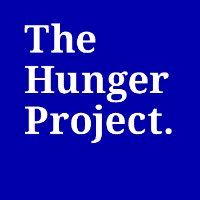“Ending the AIDS epidemic and leaving no one behind in the response will profoundly affect the lives of millions of people around the world, for generations to come.”
– Michel Sidibé, UNAIDS Executive Director
Tuesday, December 1 is World AIDS day. There is no better time than World AIDS Day to recommit ourselves to achieving an AIDS-free generation. This year, we celebrate the tremendous progress we have made together in expanding access to HIV prevention, treatment, and care services. Yet, we also focus on the potential to achieve sustainable epidemic control and end AIDS.
The theme for this year’s World AIDS Day is “The Time to Act Is Now.” Although new HIV infections have fallen by 35% since the year 2000, stigma and discrimination remain a reality for many people living with HIV. According to UNAIDS, if the world ends the AIDS epidemic by 2030, rapid progress must be made by 2020. Quickening the pace for essential HIV prevention and treatment approaches will limit the epidemic to more manageable levels and enable countries to move towards the elimination phase.
The world has made significant advances in reducing the rates of HIV infections. In the past three years alone, new HIV infections have fallen by 13%, with particular success in decreasing new infection rates among children. The number of people who are newly infected with HIV is continuing to decline in most parts of the world, and the Millennium Development Goal’s target of halting and reversing the AIDS epidemic has been achieved before the 2015 deadline.
However, despite this progress, we desperately need to make drastic advances to completely eliminate the AIDS epidemic. In 2013 alone, there were 2.1 million people newly infected. Even more troublesome, of the 35 million people living with HIV in the world, 19 million do not know their HIV-positive status. And, universal access to antiretroviral therapy is limited: only three out of five HIV-positive people have access to this vital and necessary treatment.
Progress, too, is uneven. Globally, 15 countries account for nearly 75% of all people living with HIV. Sub-Saharan Africa is the region hit hardest by the epidemic. This region makes up more than two-thirds of all people living with HIV — including 88% of the world’s HIV-positive children. Alarmingly, just three countries —Nigeria, South Africa and Uganda —account for 48 percent of all new HIV infections.
Women constitute for more than half of all people living with HIV worldwide, with women in sub-Saharan Africa making up 58% of the total number of people infected with HIV. Young women and adolescent girls are disproportionately vulnerable and at high risk for the disease as women, on average, acquire HIV five to seven years earlier than men. This is often fueled by cultural, legal and political factors that hinder a woman’s ability to protect herself from HIV. Many women and girls are often powerless to say no to sex, or to persuade their husbands or partners to use condoms. And marriage often offers no protection; many new HIV infections occur in women who are married or are in long-term relationships with one partner.
In an effort to shift these realities, The Hunger Project works to empower local volunteer leaders with information, training and materials to educate their communities on HIV/AIDS. In partnership with governments and other civil society organizations, we provide access to health care services, immunizations, antiretroviral treatments and more. Our work includes:
- HIV/AIDS and Gender Inequality Workshops.In response to the HIV/AIDS pandemic in Africa, in 2003 The Hunger Project launched HIV/AIDS and Gender Inequality Workshops to empower grassroots people to transform the conditions that have perpetuated HIV/AIDS. Ten years later, more than 4 million people have attended these workshops.
- Access to HIV/AIDS testing and treatments: In addition to generating awareness about the root causes of HIV/AIDS infections, mobile voluntary counseling and testing (VCT) services are offered in partner villages. Some of our epicenters in Malawi also partner with government to provide communities with access to antiretroviral treatments.
- Special Microfinance Programs: These programs specifically aim to invest in often ostracized HIV-positive partners. While many NGOs do not provide loans to HIV-positive people for fear that they will die before loans are repaid, The Hunger Project operates differently. It is our belief that all people have the right to access resources that can help them live healthier and more autonomous lives. With access to loans, people living with HIV/AIDS can, and do, improve their lives.
- Female condom distribution: Female condom use is not a widely known and accepted method of contraception in Malawi. The Hunger Project encourages women to take control of their sexual and reproductive health with the distribution of female condoms at epicenter health centers and specialized animators to raise awareness about their use.
This World AIDS Day, joins us in honoring the progress that has been made in the fight against HIV/AIDS and in rallying our world to end the pandemic once and for all.
